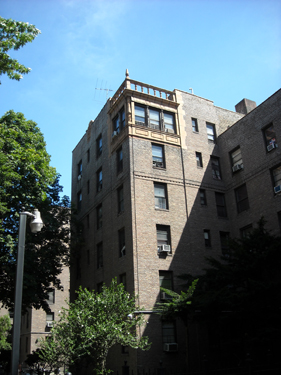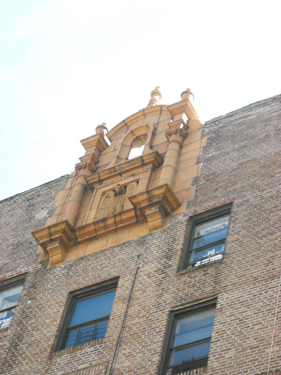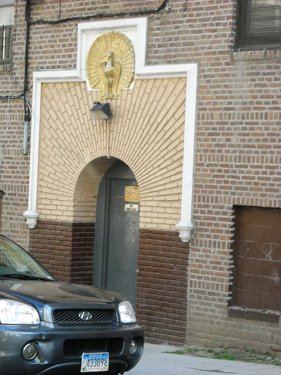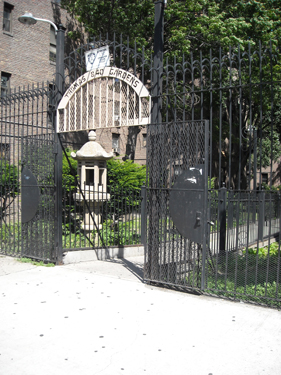Thomas Garden Apartments
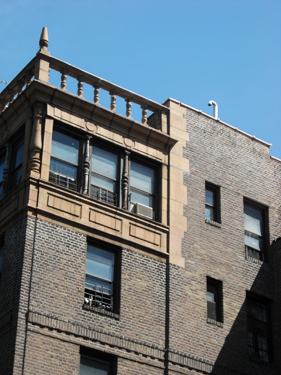
840 Grand Concourse, between 158th and 159th Streets
Andrew J. Thomas
1928
The common unit of Bronx housing in the 1920’s was the “New Law” tenement, a building of five or six stories usually abutting others on either side. Light and ventilation depended on narrow slots of “side court” and a shallow back yard. The tenement was permitted by law to cover more than 70 percent of its lot.
Reformers and residents wanted more light and air; landlords and politicians wanted the same high density of inhabitants. Builder Alexander Thomas’s solution began in thinking of the whole block, rather than a few lots, as the area to be developed. Long narrow buildings, no higher than a tenement, could be built around the perimeter of an open green space, providing exposure in all directions. “Garden apartments” (Thomas’ coinage) covered only 50 to 60 percent of their ground, while housing the same number of residents as a tenement block.
The “garden” block might be entirely enclosed by buildings, with an entrance from the street leading through to the courtyard, from which the individual sections were entered. Thomas also experimented with a U-plan, in which the garden was left open on one side, sharing its light and space with the passersby. The Concourse side of Thomas Garden Apartments is the open section of such a U, although a downhill slope hides most of the courtyard until the visitor is at the brink of entry. Abrupt transition from street life was emphasized by the exotic oriental décor of the garden, its pathways lined with stone Japanese lanterns and passing in the center over a four-way arched bridge above running water. (Only the lanterns survive.)
The buildings themselves make no attempt to carry out the oriental theme, satisfied with some ornamental brickwork around the street entrances and terracotta reliefs (an eagle and a peacock, and a ship under sail, a motif that appears on other Thomas buildings). Corners on the upper floors have increased window area, with exterior finials and scrolls recalling Spanish architecture. (The elaboration of top floor apartments was meant to overcome the reluctance of renters to climb six flights. Elevators would have destroyed the builder’s budget.)
The well-designed simplicity of the development is typical of the work of Thomas, the most important architect of modest and middle class New York housing in the first part of the twentieth century. In the nineteen-twenties, as laws were being written to subsidize the construction of affordable residences for the working-class, the International Ladies Garment Workers Union chose Thomas to build at 158th Street. When ILGWU support ran into difficulties, millionaire John D. Rockefeller, who had involved himself in the city’s housing problem, personally intervened, funding both the Gardens and a larger Thomas complex, the Paul Lawrence Dunbar Houses in Harlem.
Social planners valued the way courtyard designs invited communal relations among residents. (Many garden developments, such as the Amalgamated Clothing Workers’ housing, actually functioned as cooperatives.) Escapees from the crowded tenements regarded a stretch of greensward (decorated with lanterns or not) as the emblem of their new status. However, despite its use in developments such as Hillside Homes on the Boston Road (in 1935, the biggest housing project in the city), the enclosed courtyard plan was soon replaced by a more radical realignment of architecture and nature. The buildings of Parkchester, begun in 1938, covered only 27 percent of their site. Each was an isolated, high-rise “tower in a park.” The model was established for the problematic “projects” and co-op “cities” of the postwar Bronx.
David Bady
Photographs:
Lehman College Art Gallery
